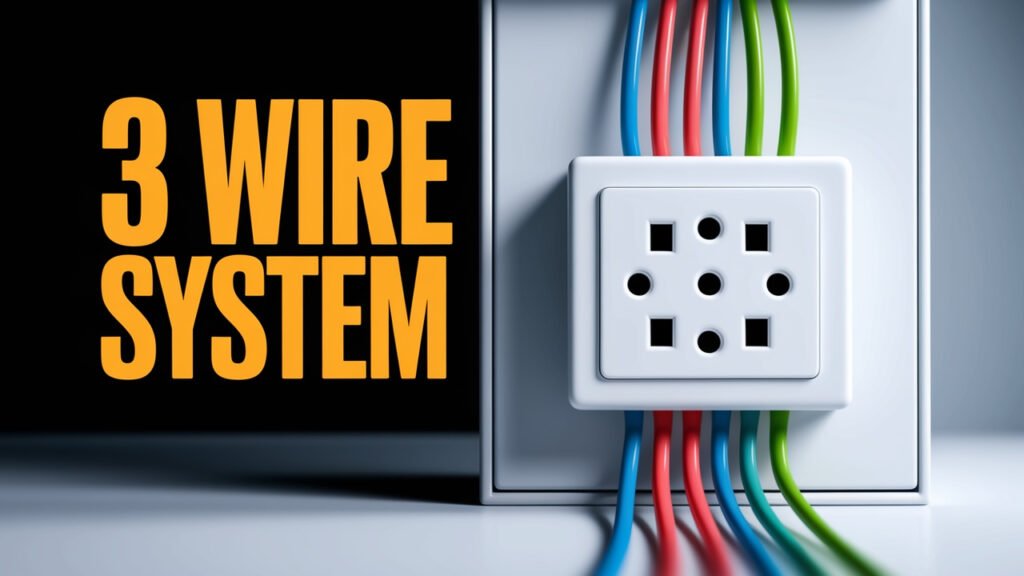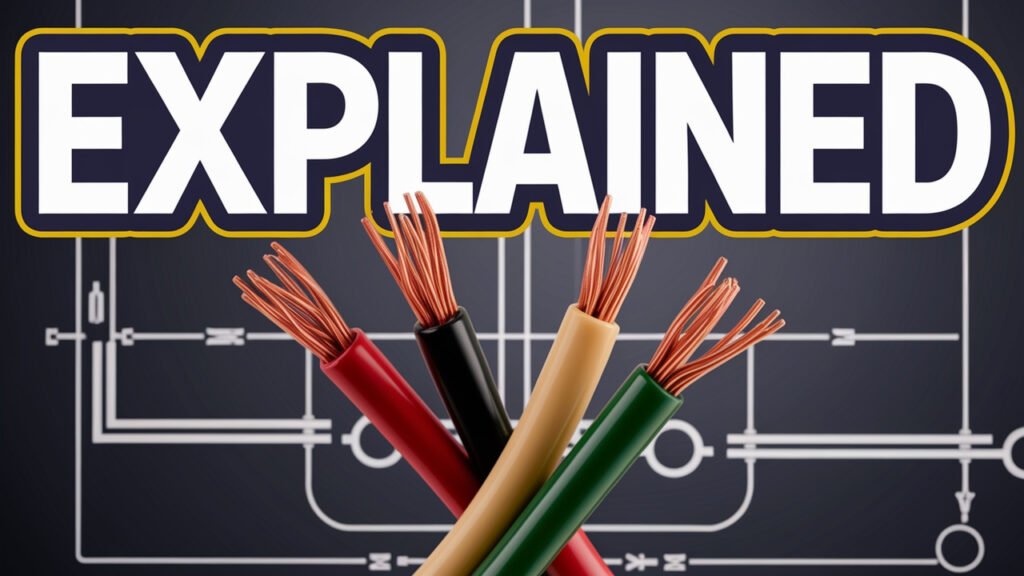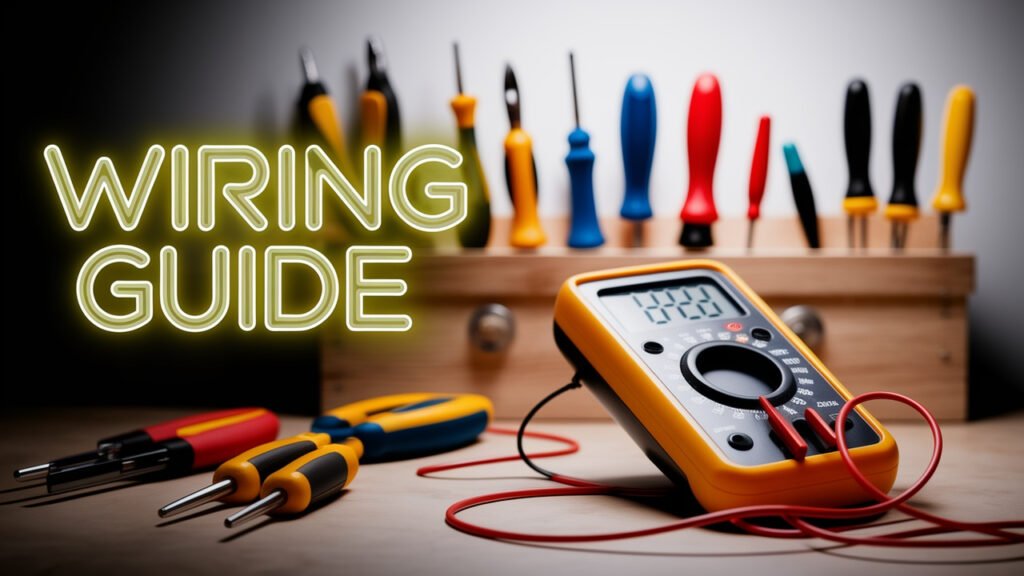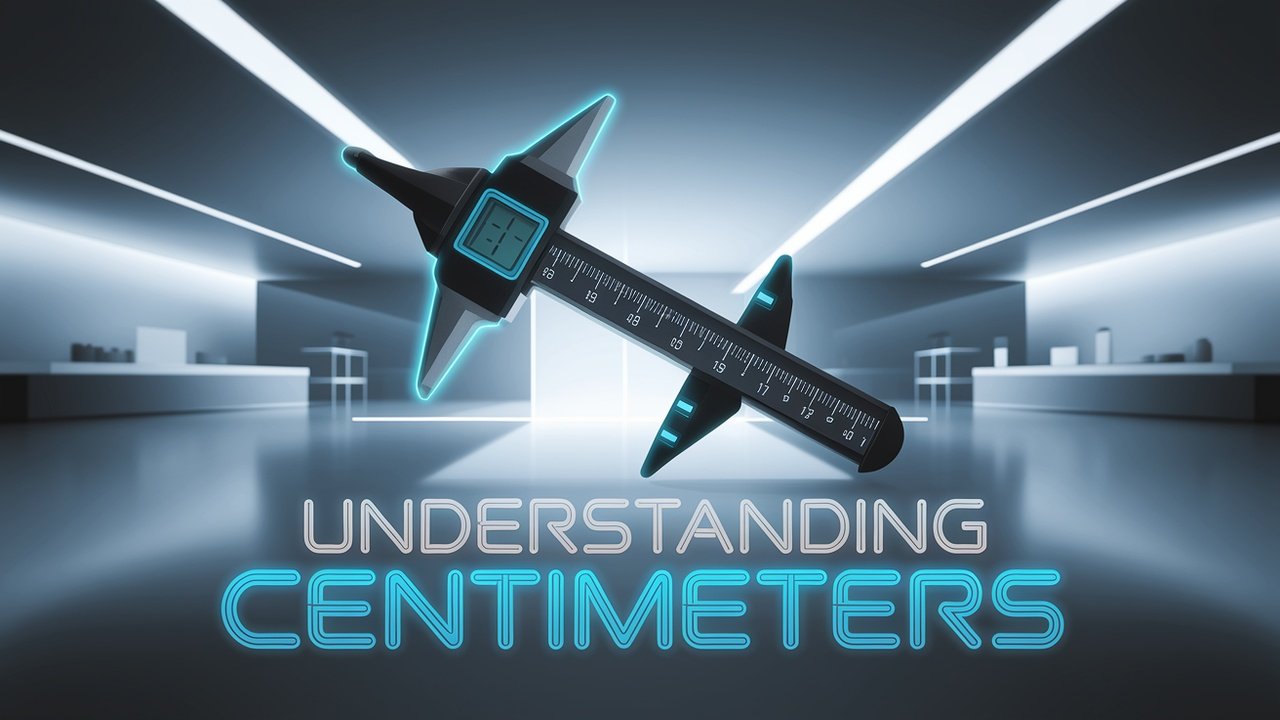Power in Simplicity: Understanding the Alternator Wiring Diagram (3 Wire System Explained

Introduction: More Than Just a Spark
When you turn the key in your vehicle, a well-orchestrated 3 Wire electrical system kicks into action, starting the engine, powering your dashboard, and charging your battery—all with the help of a crucial component: the alternator. While it may not get the attention of a roaring engine or polished rims, the alternator is the unsung hero that ensures your car’s electrical systems stay alive and thriving.
Among the various configurations of alternators, the 3 wire alternator is a widely used and highly trusted setup. It strikes a balance between simplicity and reliability, making it common in automotive, agricultural, and marine applications. If you’re doing your own auto wiring, upgrading an old vehicle, or troubleshooting a charging issue, understanding the alternator wiring diagram (3 wire) is essential.
This article walks you through everything you need to know: what the 3 wire alternator system is, how it works, the purpose of each wire, how to read and apply a wiring diagram, and practical tips for installation and maintenance. Whether you’re a DIY enthusiast or a seasoned mechanic, this guide will help demystify this powerful little piece of technology.
Chapter 1: What Is a 3-Wire Alternator?
The 3-wire alternator is a type of internally regulated alternator that uses three connections to function properly:
- Battery Terminal (B+ or Output Terminal)
- Voltage Sensing Wire (S)
- Ignition Wire (L or I)
Let’s break that down:
- Battery Terminal: This sends power to the battery and the rest of the electrical system.
- Sensing Wire: Monitors the voltage in the system to help regulate output.
- Exciter or Ignition Wire: Activates the alternator when the ignition is turned on.
This setup is more efficient and responsive compared to a 1-wire alternator, especially in modern vehicles where varying electrical loads are the norm.
Chapter 2: Why Choose a 3-Wire Alternator?

1. Voltage Regulation
The three-wire system provides better voltage regulation. The sensing wire monitors voltage from a key point in the system (often from the fuse box or battery), allowing for more accurate output from the alternator.
2. Faster Charging
Because the ignition wire energizes the alternator as soon as the key is turned, charging begins faster, even at low RPMs.
3. Versatility
The 3-wire alternator can be used in cars, tractors, boats, RVs, and custom builds. It handles accessories like lights, stereos, and winches with ease.
4. Fail-Safe Design
If one of the wires malfunctions (especially the sensing wire), the alternator often still works—just less efficiently—giving you time to fix the issue.
Chapter 3: The 3-Wire Alternator Wiring Diagram
Let’s look at the standard layout of a 3-wire alternator wiring diagram. It generally involves these three connections:
lessCopyEdit +12V (from Ignition Switch)
|
[L]------> Warning Light (optional)
|
-----------------
| |
[S] [B+]-----> Battery + Terminal
| |
Voltage Sense Main Output
|
Fuse Block / Distribution
Wire Breakdown
- B+ (Main Output)
- Goes to the battery positive terminal.
- It can also route through a fuse or fuse block.
- Provides charging current to the battery and electrical system.
- S (Sense)
- Connects to a constant +12V source, often the fuse box.
- Measures system voltage and helps the alternator adjust output accordingly.
- L (Lamp or Ignition)
- Comes from the ignition switch, often with a warning light in a series.
- When the ignition is turned on, this wire excites the alternator to start charging.
Chapter 4: Step-by-Step Wiring Instructions

Here’s how to wire a 3-wire alternator safely and correctly:
Materials Needed
- 3-wire alternator
- Automotive-grade wire
- Ring terminals and spade connectors
- Crimping tool and heat shrink tubing
- Multimeter
- Inline fuse (recommended for the sense wire)
- Optional: warning light bulb or LED
Step 1: Connect the Output (B+) Wire
- Run a heavy-gauge wire (typically 8 or 10 AWG) from the alternator output terminal to the battery positive terminal.
- Add an inline fuse (100–150A) near the battery for safety.
Step 2: Connect the Sense (S) Wire
- Run a wire from the S terminal to a voltage-sensing point in the vehicle’s fuse box or distribution block.
- This wire should also be fused (5A–10A inline fuse is common).
- It ensures the alternator adjusts to real-world system voltage rather than just its output.
Step 3: Connect the Ignition (L) Wire
- Run a wire from the L terminal to a switched 12V ignition source.
- Place a warning light or resistor (usually 10 ohms, 10 watts) in the series if required.
- This wire signals the alternator to start charging when the engine is running.
Chapter 5: Wiring Tips and Best Practices
1. Use Quality Connectors
Bad connections cause voltage drops and charging issues. Use heat-shrink connectors and double-crimp where possible.
2. Fuse Everything
Protect your wiring from shorts. Inline fuses on the S and B+ wires are a must.
3. Route Wires Cleanly
Avoid hot surfaces and moving parts. Use loom tubing and clamps to organize and protect your wiring.
4. Test with a Multimeter
- After installation, use a multimeter to confirm the following:
- The ignition wire gets power with the key on.
- The sense wire reads 12V+ at rest.
- The output wire delivers 13.5–14.7V when the engine is running.
Chapter 6: Troubleshooting Common Issues

Issue: Alternator Not Charging
- Check if the L wire is getting 12V with the ignition on.
- Inspect the warning light bulb or resistor—if this burns out, the alternator might not energize.
- Ensure ground straps from the engine to the chassis are secure.
Issue: Battery Overcharging
- The sense wire may be connected too close to the alternator, not reflecting the actual system voltage.
- Move it to a fuse box or the far end of the system for accurate regulation.
Issue: Battery Draining Overnight
- Check for parasitic drain via the ignition wire.
- Install a relay or diode to prevent backfeed from the alternator.
Chapter 7: Applications for the 3-Wire Alternator
This setup is widely used in:
- Classic Car Restorations
- Hot Rods and Muscle Cars
- Tractor and Farm Equipment
- Off-Grid Systems and RVs
- Marine Applications
In most of these, the 3-wire system is valued for balancing performance, simplicity, and adaptability.
Chapter 8: Comparison: 1 Wire vs 3 Wire Alternator
| Feature | 1 Wire Alternator | 3 Wire Alternator |
|---|---|---|
| Simplicity | Easiest to install | Slightly more complex |
| Voltage Regulation | Less accurate | Very accurate |
| Immediate Charging | Often needs higher RPM | Starts at key-on |
| Best Use Case | Show cars, simple setups | Daily drivers, high-load vehicles |
| Sensing Wire | No | Yes |
| Ignition Wire | No | Yes |
While the 1-wire is simpler, the 3-wire system is superior for any vehicle with multiple accessories or fluctuating loads.
Chapter 9: Diagrams for Common Setups
To better visualize, here’s how you’d wire a 3-wire alternator in two common cases:
Basic Car Setup
- B+ terminal → Battery (+)
- S terminal → Fuse Box (via inline fuse)
- L terminal → Ignition switch (with warning light or resistor)
Tractor or Off-Grid Application
- B+ terminal → Charge Controller or Battery Bank
- S terminal → Voltage sensor or fuse box
- L terminal → Toggle switch (with LED warning)
Conclusion: Winning Confidence Starts Here
Understanding the alternator wiring diagram (3 wire) is more than an exercise in auto electrics—it’s about taking control of your vehicle’s reliability and performance. This time-tested setup combines precise voltage control with early engagement and robust adaptability, making it the preferred choice in a variety of automotive and industrial applications.
With the right knowledge, tools, and a good wiring diagram in hand, even complex systems become manageable. Whether you’re restoring a classic car or building an electrical system from scratch, the 3-wire alternator can provide the dependable power you need.






